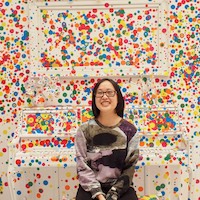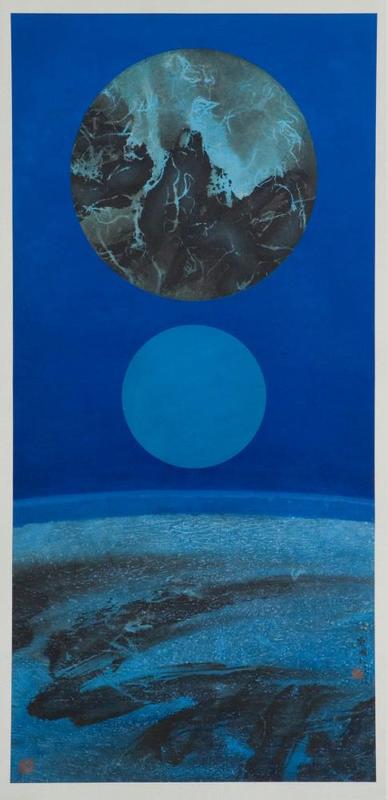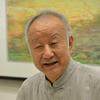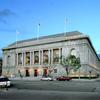More about Which is Earth? No. 7

Contributor
The seventh answer to Liu Guo-song's Which is Earth? series
Before you scoff and say, "Mr. Liu, sir, you can't trick me; the Earth is clearly the blue one," and walk away with—dare we say it—spaced out satisfaction, remember that this ain't your average what-you-see-is-what-you-get landscape. The three spheres you see in the ink painting may not represent Earth but something more transcendent than the universe itself.
After Apollo 8 brought back the iconic photograph of our Planet Earth partially obscured by the moon in December 1968, Liu Guo-song felt so moved by its majesty that he made several series of ink paintings depicting variations of the spacescape.
Which is Earth?, for example, contains close to three hundred paintings of the earth and moon. In true J.Crew fashion, they come in about a million different colors and color combos. Which is Earth? No. 7 can be found in the online collections at the Asian Art Museum.
Liu Guo-song had it pretty lucky, though, living in Taiwan. Mainland China has endured a pretty rough history when it comes to cultural development.
First, there was Confucius. He denounced art for art's sake because art had to serve a greater purpose than self-fulfillment. "Music! Music! Is it no more than bells and drums?" he once proclaimed. (Uh, no, Confucius! How could you forget the banjo?!)
Then, more recently, there was Mao. To purify the ideology of the Communist Party and reassert authority, he launched a horrifying clean-up session of art and writing called the Cultural Revolution.
In short, nothing the people made could fulfill any other purpose than serve the government.
From 1966 to 1976, brainwashed youth across China sang, "Let's be bougie, y'all! Let's make art that professes our absolute love for China! Let's paint things that imitate the real thing exactly—except prettier! What's that? Free thinking? No, have this beautiful mountain instead!"
Even today, this legacy of realist art, or the literati, lingers. No conspiracy here, just a difficult time getting around a centuries-old preoccupation with tradition and social realism.
Taiwan and Hong Kong, meanwhile, were off doing their own thing. Artists, relatively isolated from China’s aversion to Western values, experimented like crazy with both Eastern and Western techniques.
Liu Guo-song got quite a thrill out of pouring ink on custom-made, super-coarse cotton paper and then plucking out the fibers. Slap that with some collage and you've got yourself a painting. What could he say? He liked it rough.
As the leader of the contemporary Eastern art movement, Liu Guo-song pushed them to abstract nature to the limit. Even after all they had done, he believed they still had a ways to go.
First, the moon. And then what? Becoming one with the universal spirit?
Who knows? The possibilities are endless.
Sources
- "Contemporary Ink Art : Journey." Sotheby's. October 04, 2016. http://www.sothebys.com/en/auctions/ecatalogue/2016/contemporary-ink-ar….
- Sullivan, Michael. "A Fresh Look at Twentieth-Century Chinese Painting." Journal of the Royal Society of Arts 133, no. 5347 (June 1985): 480-92.
- Li, Chu-tsing, and Thomas Lawton. "The New Chinese Landscape." Art Journal 27, no. 2 (Winter 1967-1968): 142-51.











